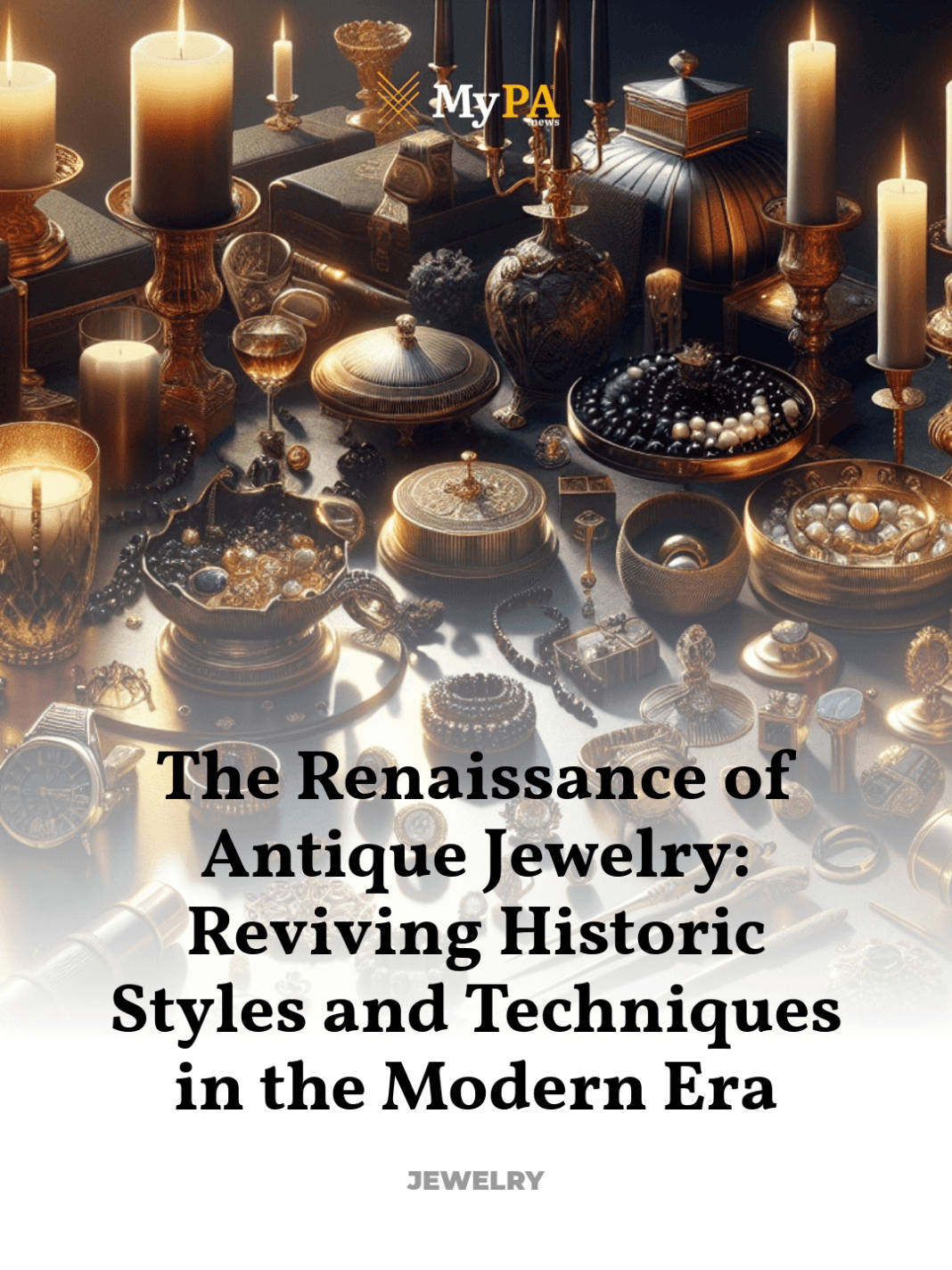How historic styles and forgotten techniques are making a modern comeback
The allure of antique jewelry, with its intricate designs and storied past, is experiencing a significant resurgence. This revival is not just about the aesthetics of bygone eras but also the reclamation and reintroduction of ancient craftsmanship techniques that were nearly lost to time. Today’s luxury market sees a blend of reverence for historical artistry with contemporary tastes, leading to a unique fusion that appeals to collectors and fashion aficionados alike.
- Historical Context and Significance
- Revived Techniques in Modern Craftsmanship
- Influential Periods and Their Styles
- Modern Adaptations and Innovations
- Cultural Impact and Future Trends
- Concluding Reflections on Heritage and Artistry
Historical Context and Significance
The fascination with antique jewelry is deeply rooted in its ability to convey stories and traditions from different cultures and eras. Each piece holds a narrative, whether it’s a Victorian brooch or an Art Deco necklace, offering insights into the social, economic, and artistic conditions of the time. The revival of these pieces is not merely a trend but a deeper appreciation of history and the skills of yesteryears’ jewelers.
Historically, jewelry has served various roles, from signifying status and wealth to being used as amulets for protection. The techniques used in creating these pieces were often passed down through generations of craftsmen, with each era adding its own signature styles and innovations. However, with the advent of modern manufacturing, many of these skilled practices were overshadowed by mass production.
Revived Techniques in Modern Craftsmanship
Today’s resurgence of antique jewelry has brought with it a revival of forgotten techniques. Artisans are increasingly turning to methods like hand engraving, filigree, and granulation, all of which require a high level of skill and patience. These techniques offer a distinct texture and depth that cannot be replicated by machines, making each piece uniquely personal and rich in detail.
For instance, the art of filigree, which involves twisting thin wires of metal and arranging them into intricate patterns, was a hallmark of ancient Greek and Etruscan jewelry. Modern jewelers are not only adopting these techniques but are also adapting them to create pieces that meet contemporary aesthetic standards while preserving the historical essence.
Influential Periods and Their Styles
Several historical periods have been particularly influential in shaping the trends in antique jewelry that are making a comeback. The Georgian, Victorian, and Art Nouveau periods, each known for their distinctive styles, are seeing renewed interest among collectors and designers.
The Georgian era, known for its elaborate use of diamonds and colored stones, favored intricate designs such as the ‘lover’s eye’ miniatures and detailed floral motifs. Victorian jewelry, with its romantic symbolism, featured heavy use of lockets and cameos, which are now prized for their vintage charm. Art Nouveau, on the other hand, was characterized by its organic shapes, flowing lines, and the prominent use of enameling, influencing modern jewelry with its emphasis on nature and whimsy.
Modern Adaptations and Innovations
While traditional techniques and styles form the foundation of the antique jewelry renaissance, contemporary adaptations and technological innovations have also played a crucial role. Advances in technology allow for greater precision in recreating historic designs, while contemporary materials and gemstones bring new possibilities and durability to antique styles.
Designers today are not just replicating old pieces but are integrating antique elements with modern design principles to create hybrid styles. For example, a brooch from the Edwardian era might be transformed into a pendant with modern laser-cut patterns, blending the old with the new seamlessly.
Cultural Impact and Future Trends
The renewed interest in antique jewelry is also part of a larger cultural movement towards sustainability and ethical fashion. As consumers become more conscious of the origins and environmental impact of their purchases, the appeal of antique jewelry, which is inherently recyclable and sustainable, grows.
This trend is supported by the storytelling aspect of antique pieces, which resonates with the modern consumer’s desire for authenticity and connection. As we move forward, the influence of historical styles is likely to continue to shape the luxury jewelry market, with an increasing emphasis on craftsmanship, heritage, and the stories behind the pieces.
Concluding Reflections on Heritage and Artistry
The renaissance of antique jewelry is not just a passing trend but a profound movement towards recognizing and preserving the craftsmanship of the past. By integrating ancient techniques and styles into modern contexts, today’s jewelers are keeping the rich traditions alive, ensuring that they continue to enchant and inspire for generations to come.
For further exploration of antique jewelry and its impact on modern design, esteemed institutions like the Metropolitan Museum of Art offer extensive collections and exhibitions that trace the evolution of decorative arts, including jewelry. Visit their website to delve deeper into the artistry and history of these exquisite pieces.



